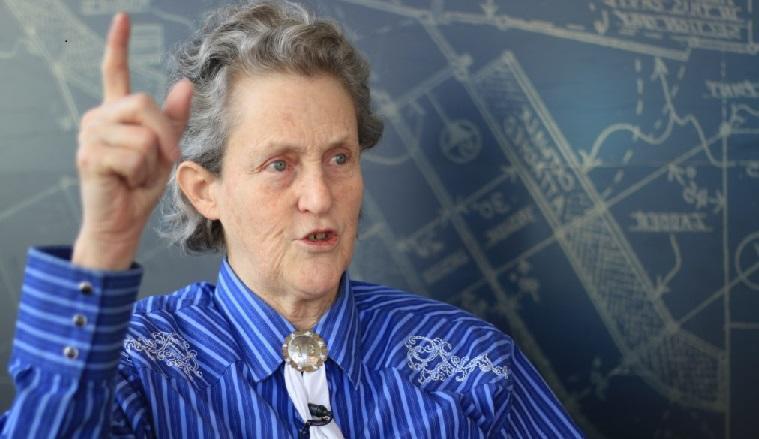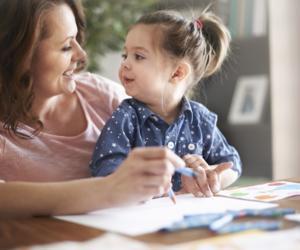Temple Grandin Teaches How to Move Beyond Labels

Mary Temple Grandin, a professor of animal science at Colorado State University, expert consultant in the livestock industry on animal behavior and Autism spokesperson, was born on August 29th, 1947. She was never officially diagnosed with autism during her childhood or adolescence.
Rather, she received an official diagnosis of ‘brain damage’ at the age of 2 and she did not speak until the age of 4. It wasn’t until her 40s that Grandin received an official diagnosis consistent with that of autism.
Her love of animal science led Grandin to advocate for many important causes in humans and animals alike. Check out Temple Grandin: How the Girl Who Loved Cows Embraced Autism and Changed the World, written by naturalist and best-selling author Sy Montgomery.
In 1970, Grandin earned her bachelor’s degree in human psychology. In 1975, she received her master’s degree in animal science and in 1989, she received her doctoral degree in animal science. During her studies, Grandin invented the ‘hug box’, which is a deep-pressure therapeutic device intended to relieve stress and calm individuals with autism spectrum disorders. So far, Grandin has issued 18 books on the subject of autism and humane animal treatment. “I got motivated when studying; [it] became the way to a goal of becoming a scientist. Education needs to be the way to a goal,” she said.
Today, Temple Grandin is known as one of the first individuals with autism to publicly share her own experience with the condition. She has touched countless lives with her seminars, books, YouTube videos, and through film.
If you or your children want to learn more about Temple Grandin, check out this kid-friendly book about her life, The Girl Who Thought in Pictures: The Story of Dr. Temple Grandin.
Labels and the autism spectrum
Over the years, the diagnostic norms for autism have kept on changing. Often, labels such as autism, ADHD or learning disability are placed on the same child. A label may even switch back and forth for a child who receives special services at school. “The problem with autism is you’ve got a spectrum that ranges from Einstein to someone with no language and intellectual disability,” said Grandin. With autism diagnoses among children on the rise, Grandin aims to demonstrate the value of these individuals. Although they view the world differently, Grandin’s personal experience has led her to believe that different kinds of minds all have something to contribute to society. Moreover, if these different kinds of minds are brought together, they can help resolve complex issues. “We’ve got to help the minds that are different succeed. We need these minds that are different, and we must not screen them out because the world needs all kinds of minds,” she said.
She has written extensively about how different life is for people with autism. You can learn more about her book, The Autistic Brain: Helping Different Kinds of Minds Succeed.
Different Individuals Who Have Different Kinds of Minds and the four ways of thought
During her event, Different Individuals Who Have Different Kinds of Minds, which took place in the Duke Ellington Ballroom, Grandin shared relevant information to explain the ways in which different minds work. More specifically, she focused on the brains of individuals with autism and why generalized labels should not be given. “I don’t want to see a label holding back your career; that’s something I don’t want to see,” said Grandin. People in the audience, which included educators and parents of children with autism, were moved by Grandin’s presentation. Among these individuals was Nana Zabieg, AID rehab specialist. AID is an organization that works alongside individuals suffering from physical, mental, or developmental health-related difficulties. “I loved her, I don’t know if anything changed because I’ve been in that view to begin with, so it’s just a nice reassuring fact that ‘hey, this is a good thing,” said Zaneig.
Moving ahead in her speech on the different kinds of minds, Grandin identified 4 different ways of thinking by individuals with autism: pattern thinking, auditory thinking, photo-realistic visual thinking, and verbal logic thinking. She stressed how each way of thinking has its own strengths and weaknesses. For instance, individuals with autism who are pattern thinkers struggle with reading, while auditory thinkers have difficulties with visualization. What’s more, photo-realistic visual thinkers are not good with math and numbers, while verbal logic thinkers struggle with drawing. Grandin said that she views herself as being a photo-realistic visual thinker who has a difficult time making sense of algebra because there are no pictures. She also added that a majority of autistic visual thinkers are not perceived in their work due to strict algebra classes. “Let them take geometry; I’m not suggesting no math — I’m not suggesting that — but I think there’s some pattern thinkers that think you could have algebra in order to think,” she said.
“I’ve seen too many kids who are becoming their disability.”
Grandin noted several issues with the educational system, one of which is the top-down perception. While a majority of individuals are top-down thinkers, some individuals with autism or dyslexia, as well as some visual thinkers, are bottom-up thinkers. Bottom-up thinkers perceive things by studying specific examples and this requires access to large volumes of data. “This is the way my mind is: people have said to me my talks are better at 50 than they were at age 40. That’s why you’ve got the kids; get them out doing things,” said Grandin. She made her point by emphasizing the significance of hands-on activities, such as sewing, cooking, woodworking, and computer programs. Not only do such classes help children with autism to develop their occupational skills, but they also give them the chance to interact socially with their peers. “Take the thing the kid is good at and build on it; build on the area of strength. I’ve seen too many kids (who) are becoming their disability,” said Grandin. She recalled when she was 8 years old and her mother taught her to be a party hostess and shake individuals’ hands, take their coats, etc. Performing a job well done helped her to improve her self-confidence. “It hurts the autistic much more than it does the normal kids to not have these skills formally taught,” she said.
Grandin makes it clear that labeling a child as autistic may impact a parent’s expectations of them. However, a child diagnosed with autism should be taught necessary skills that are outside their comfort zone so that they can achieve a better sense of task completion. She recommends that occupational skills start in middle school, so that children can learn responsibility, discipline, and independence. For younger children, possible jobs include volunteering at a church, walking neighbors’ dogs, or tinkering with computers. For teenagers at the age of 16 and older, possible jobs include internships in skilled trades, working at a research lab, working as a waiter/waitress, or working as a grocery store. Some jobs may require artistic capability, while others may involve visual perception. However, most important is that there are several different fields where individuals with autism can develop their skills and develop work ethic. “If you totally get rid of autism, you’d have nobody to fix your computer in the future,” said Grandin.
The importance of stepping out of comfort zones
During her seminars on autism, Grandin continuously stresses the importance of hands-on learning experiences and work experiences. She encourages individuals not to become their own labels and step out of their comfort zones so that they can develop their skills and achieve great things in life. “The skills that people with autism bring to the table should be nurtured for their benefit and society’s,” said Grandin. Despite the existence of different kinds of minds, Grandin’s take-away message is always the same – “Rigid academic and social expectations could wind up stifling a mind that — while it might struggle to conjugate a verb — could one day take us to distant stars.”
Temple Grandin teaches us that we can learn a lot about autism through animals, and vice versa. You can read more about her discoveries in her book, Animals in Translation: Using the Mysteries of Autism to Decode Animal Behavior
Photo: Wikimedia Commons
References
https://en.wikipedia.org/wiki/Temple_Grandin
http://www.utm.edu/1297/02/14/2018.html
http://www.warrencountyrecord.com/local_news/article_90648484-b7ee-11e6-81e5-bb28796e0ccf.html
Disclaimer: We are a participant in the Amazon Services LLC Associates Program, an affiliate advertising program designed to provide a means for us to earn fees by linking to Amazon.com and affiliated sites.












